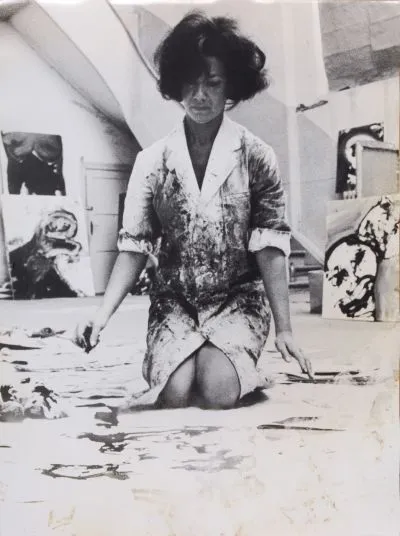Your currently viewing RAW Modern | Switch to RAW Contemporary
The Alchemical Egg, 1956
Catalogue essay by Blanche Llewellyn
Throughout her career, Ruth Franken asked herself, “How should one paint today? Can one paint at all today?” – and in response, she embarked on a series of visual experiments that integrated a spiritual dimension. This quest for coherence is evident in her diverse body of work, which incorporated techniques such as ripping, cutting, mirroring, and burning to delve into themes of fragmentation, incompleteness, multiplication, and decomposition.
In “The Alchemical Egg,” painted using the impasto technique to accentuate visible brushstrokes, the canvas gains depth and texture – emphasized by the bluish tones, derived from a monochrome grey palette, evoking an aura of internal magic emerging from the canvas.
The egg appears in many surrealist artworks, most notably “Geopoliticus Child Watching the Birth of the New Man” by Salvador Dalí (1943). Reclaiming the symbol of fertility and rebirth, Ruth Francken uses the shell to evoke protection and enclosure, and the content, the hidden, subconscious aspects of the mind.
In Francken’s painting, the egg, emerging from the dark background, appears raw and primitive. Concerned in her work with transformation and purification, the egg here symbolizes the potential for metamorphosis and the cycle of creation and rebirth. It embodies the concept of “prima materia”, the raw substance of alchemy, and signifies the integration of opposing forces, including concepts like the union of masculine (the shell) and feminine (the content) energies. Ultimately, Francken’s exploration embodies a quest for spiritual enlightenment – placing the canvas at the center of the Surrealist concerns.

